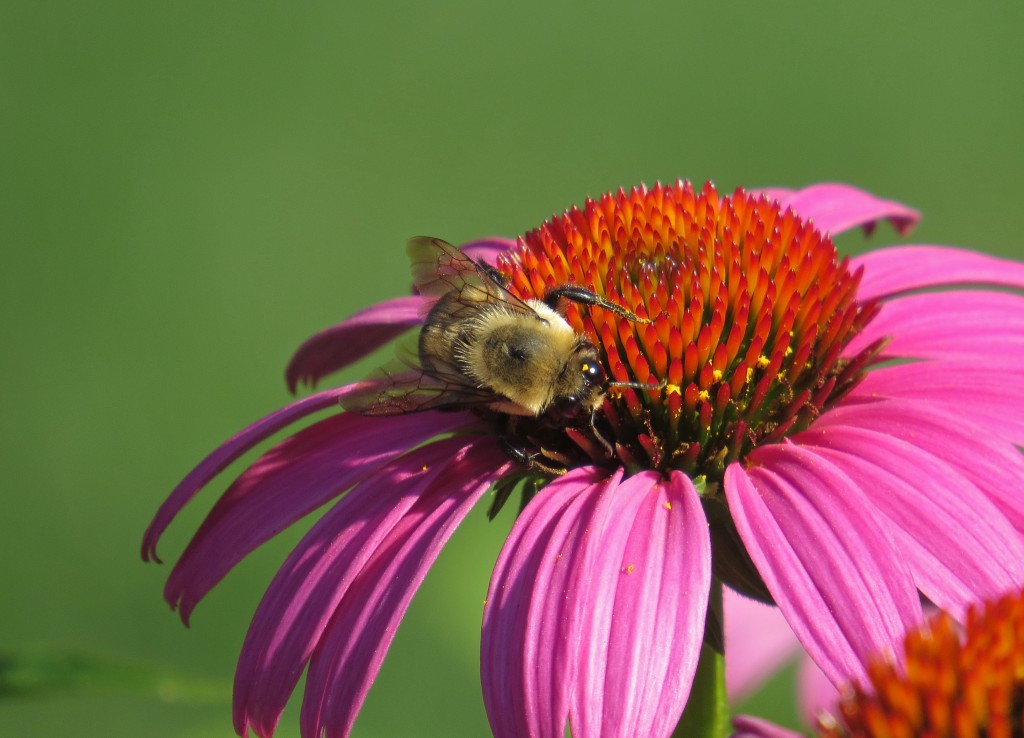Morning Eye Candy: Landing Pad
Posted in Photography on August 22 2014, by Matt Newman

A bumblebee atop a ruby-star coneflower in the Home Gardening Center – Photo by Patricia Gonzalez

Inside The New York Botanical Garden
Posted in Photography on August 22 2014, by Matt Newman

A bumblebee atop a ruby-star coneflower in the Home Gardening Center – Photo by Patricia Gonzalez
Posted in Photography on July 14 2014, by Lansing Moore
A bee nestles in an Echinacea blossom. This plant has a long history of medicinal use, and is clearly popular with pollinators.
Echinacea purpurea ‘Virgin’ in the Seasonal Walk – Photo by Ivo M. Vermeulen
Posted in Around the Garden, Photography on July 29 2012, by Matt Newman
Photo by Ivo M. Vermeulen
Posted in Around the Garden, Photography on June 30 2012, by Matt Newman
Echinacea may be synonymous with the health supplement aisle in your local organic market, but it gets its name from a far older comparison: the Greek word echino, which means “sea urchin.” That spiny head is a dead giveaway.
Echinacea purpurea ‘Rubinstern’ — Photo by Ivo M. Vermeulen
Posted in Gardening Tips on September 14 2009, by Sonia Uyterhoeven
 |
Sonia Uyterhoeven is Gardener for Public Education. Join her each weekend for home gardening demonstrations on a variety of topics in the Home Gardening Center. |
 Life used to be so simple. When asked the color of coneflowers (Echinacea) the answer used to be…well, actually now that I think about it, the answer was never simple. What is the color of a coneflower? Is it purple, mauve, pink, carmine, rose, or magenta?
Life used to be so simple. When asked the color of coneflowers (Echinacea) the answer used to be…well, actually now that I think about it, the answer was never simple. What is the color of a coneflower? Is it purple, mauve, pink, carmine, rose, or magenta?
Does it have a registered name and color number? Do Benjamin Moore and Sherwin Williams have a swatch? Whether we could put a name on it, or not, we all knew the color we were talking about—that pinkish-purplish color.
These days if you browse the catalogs of many reputable nurseries searching for coneflowers, you will think that you have landed on the wrong page. The color spectrum of these understated native beauties has exploded. The flowers have also taken on a new form. Some are now crimped and coiffed like poodles, in fact, to celebrate this coming out, one of the newer cultivars is actually named ‘Pink Poodle’.
We have seen hybridizing initiatives in the past that have experimented with color, but many of these introductions had kept their native prairie features, and these selections had wiry stems that begged for support from tall grasses and looked out of place standing alone in a perennial garden.
The newer introductions that we are now seeing have strong stems as well as a good head on their shoulders. A number of these new hybrids have come from Holland from the Dutch designer and nurseryman, Piet Oudolf. Oudolf is rigorous in his selection process, choosing only garden-worthy plants that not only flower well but die with dignity and keep their appearance through multiple seasons.